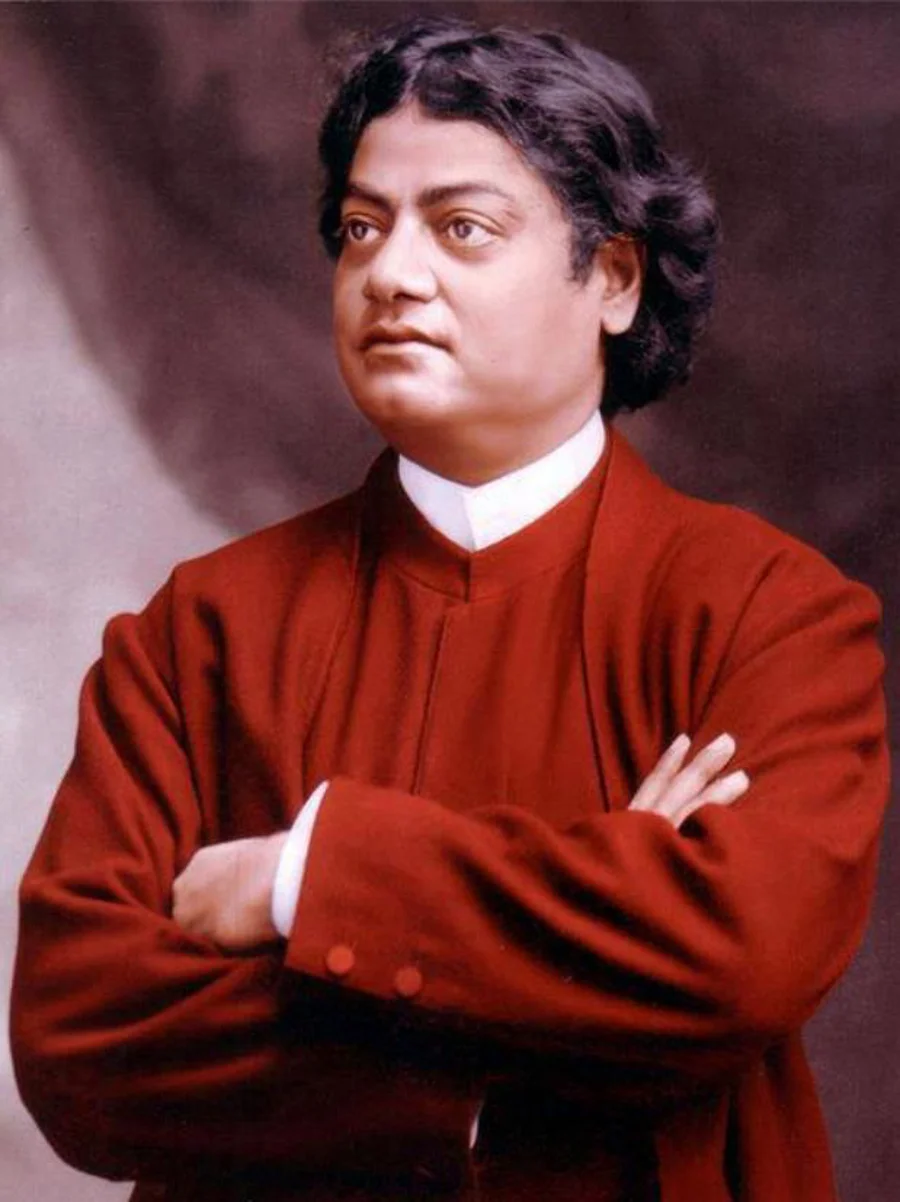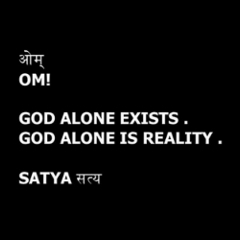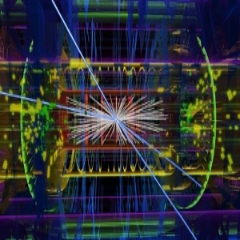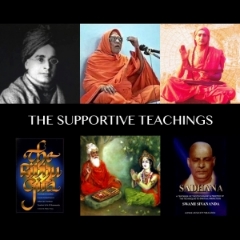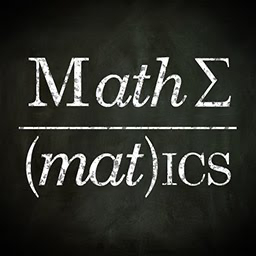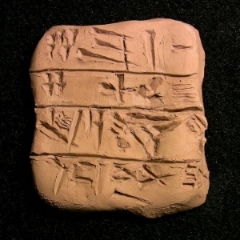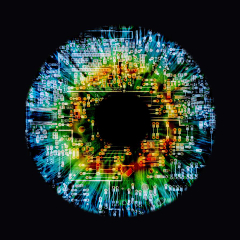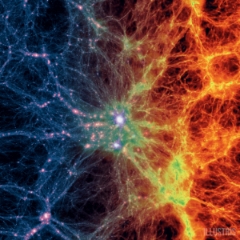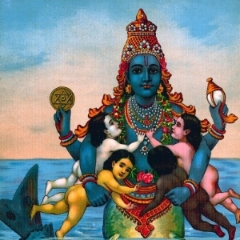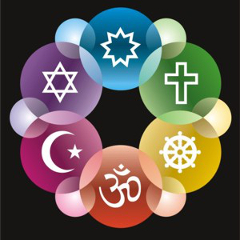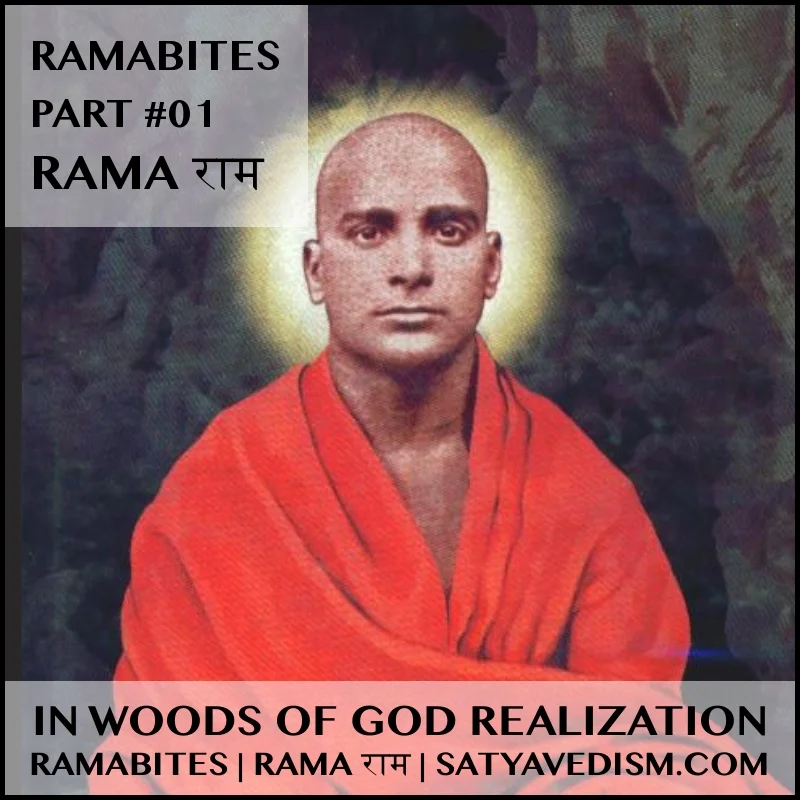THE VEDANTA PHILOSOPY | CWSV 1
| | homeTHE COMPLETE WORKS | VOLUME 1 | SWAMI VIVEKANANDA
|| SECTION 5 | LECTURES & DISCOURSES ||
|| THE VEDANTA PHILOSOPHY ||
The Vedanta philosophy , as it is generally called at the present day , really comprises all the various sects that now exist in India . Thus there have been various interpretations , and to my mind they have been progressive , beginning with the dualistic or Dvaita and ending with the non-dualistic or Advaita .
The word Vedanta literally means the end of the Vedas — the Vedas being the scriptures of the Hindus . Sometimes in the West by the Vedas are meant only the hymns and rituals of the Vedas . But at the present time these parts have almost gone out of use , and usually by the word Vedas in India , the Vedanta is meant .
All our commentators , when they want to quote a passage from the scriptures , as a rule , quote from the Vedanta , which has another technical name with the commentators — the Shrutis . ( The term Shruti — meaning " that which is heard " — though including the whole of the Vedic literature , is chiefly applied by the commentators to the Upanishads . )
Now , all the books known by the name of the Vedanta were not entirely written after the ritualistic portions of the Vedas . For instance , one of them — the Isha Upanishad — forms the fortieth chapter of the Yajur-Veda , that being one of the oldest parts of the Vedas . There are other Upanishads which form portions of the Brahmanas or ritualistic writings ; and the rest of the Upanishads are independent , not comprised in any of the Brahmanas or other parts of the Vedas ; but there is no reason to suppose that they were entirely independent of other parts , for , as we well know , many of these have been lost entirely and many of the Brahmanas have become extinct . So it is quite possible that the independent Upanishads belonged to some Brahmanas , which in course of time fell into disuse , while the Upanishads remained . These Upanishads are also called Forest Books or Aranyakas .
The Vedanta , then , practically forms the scriptures of the Hindus , and all systems of philosophy that are orthodox have to take it as their foundation . Even the Buddhists and Jains , when it suits their purpose , will quote a passage from the Vedanta as authority .
All schools of philosophy in India , although they claim to have been based upon the Vedas , took different names for their systems . The last one , the system of Vyasa , took its stand upon the doctrines of the Vedas more than the previous systems did , and made an attempt to harmonise the preceding philosophies , such as the Sankhya and the Nyaya , with the doctrines of the Vedanta . So it is especially called the Vedanta philosophy ; and the Sutras or aphorisms of Vyasa are , in modern India , the basis of the Vedanta philosophy .
Again , these Sutras of Vyasa have been variously explained by different commentators . In general there are three sorts of commentators in India now ; from their interpretations have arisen three systems of philosophy and sects .
One is the dualistic , or Dvaita ; a second is the qualified non-dualistic , or Vishishtadvaita ; and a third is the non-dualistic , or Advaita .
Of these the dualistic and the qualified non-dualistic include the largest number of the Indian people . The non-dualists are comparatively few in number .
Now I will try to lay before you the ideas that are contained in all these three sects ; but before going on , I will make one remark — that these different Vedanta systems have one common psychology , and that is , the psychology of the Sankhya system . The Sankhya psychology is very much like the psychologies of the Nyaya and Vaisheshika systems , differing only in minor particulars .
All the Vedantists agree on three points . They believe in GOD , in the Vedas as revealed , and in cycles . We have already considered the Vedas .
The belief about cycles is as follows : All matter throughout the universe is the outcome of one primal matter called Akasha ; and all force , whether gravitation , attraction or repulsion , or life , is the outcome of one primal force called Prana . Prana acting on Akasha is creating or projecting the universe .
At the beginning of a cycle , Akasha is motionless , unmanifested . Then Prana begins to act , more and more , creating grosser and grosser forms out of Akasha — plants , animals , humans , stars , and so on . After an incalculable time this evolution ceases and involution begins , everything being resolved back through finer and finer forms into the original Akasha and Prana , when a new cycle follows .
Now there is something beyond Akasha and Prana . Both can be resolved into a third thing called Mahat — the Cosmic Mind . This Cosmic Mind does not create Akasha and Prana , but changes itself into them .
We will now take up the beliefs about mind , soul , and GOD .
According to the universally accepted Sankhya psychology , in perception — in the case of vision , for instance — there are , first of all , the instruments of vision , the eyes . Behind the instruments — the eyes — is the organ of vision or Indriya — the optic nerve and its centres — which is not the external instrument , but without which the eyes will not see . More still is needed for perception .
The mind or Manas must come and attach itself to the organ . And besides this , the sensation must be carried to the intellect or Buddhi — the determinative , reactive state of the mind . When the reaction comes from Buddhi , along with it flashes the external world and egoism . Here then is the will ; but everything is not complete .
Just as every picture , being composed of successive impulses of light , must be united on something stationary to form a whole , so all the ideas in the mind must be gathered and projected on something that is stationary — relatively to the body and mind — that is , on what is called the Soul or Purusha or Atman .
According to the Sankhya philosophy , the reactive state of the mind called Buddhi or intellect is the outcome , the change , or a certain manifestation of the Mahat or Cosmic Mind . The Mahat becomes changed into vibrating thought ; and that becomes in one part changed into the organs , and in the other part into the fine particles of matter . Out of the combination of all these , the whole of this universe is produced . Behind even Mahat , the Sankhya conceives of a certain state which is called Avyakta or unmanifested , where even the manifestation of mind is not present , but only the causes exist . It is also called Prakriti .
Beyond this Prakriti , and eternally separate from it , is the Purusha , the soul of the Sankhya which is without attributes and omnipresent . The Purusha is not the doer but the witness . The illustration of the crystal is used to explain the Purusha . The latter is said to be like a crystal without any colour , before which different colours are placed , and then it seems to be coloured by the colours before it , but in reality it is not .
The Vedantists reject the Sankhya ideas of the soul and nature . They claim that between them there is a huge gulf to be bridged over . On the one hand the Sankhya system comes to nature , and then at once it has to jump over to the other side and come to the soul , which is entirely separate from nature . How can these different colours , as the Sankhya calls them , be able to act on that soul which by its nature is colourless ?
So the Vedantists , from the very first affirm that this soul and this nature are one . Even the dualistic Vedantists admit that the Atman or GOD is not only the efficient cause of this universe , but also the material cause . But they only say so in so many words . They do not really mean it , for they try to escape from their conclusions , in this way : They say there are three existences in this universe — GOD , soul , and nature . Nature and soul are , as it were , the body of GOD , and in this sense it may be said that GOD and the whole universe are one . But this nature and all these various souls remain different from each other through all eternity . Only at the beginning of a cycle do they become manifest ; and when the cycle ends , they become fine , and remain in a fine state .
The Advaita Vedantists — the non-dualists — reject this theory of the soul , and , having nearly the whole range of the Upanishads in their favour , build their philosophy entirely upon them . All the books contained in me Upanishads have one subject , one task before them — to prove the following theme :
" Just as by the knowledge of one lump of clay we have the knowledge of all the clay in the universe , so what is that , knowing which we know everything in the universe ? "
The idea of the Advaitists is to generalise the whole universe into one — that something which is really the whole of this universe . And they claim that this whole universe is one , that it is one Being manifesting itself in all these various forms .
They admit that what the Sankhya calls nature exists , but say that nature is GOD . It is this Being , the Sat , which has become converted into all this — the universe , human , soul , and everything that exists . Mind and Mahat are but the manifestations of that one Sat .
But then the difficulty arises that this would be pantheism . How came that Sat which is unchangeable , as they admit ( for that which is absolute is unchangeable ) , to be changed into that which is changeable , and perishable ?
The Advaitists here have a theory which they call Vivarta Vada or apparent manifestation . According to the dualists and the Sankhyas , the whole of this universe is the evolution of primal nature . According to some of the Advaitists and some of the dualists , the whole of this universe is evolved from GOD . And according to the Advaitists proper , the followers of Shankaracharya , the whole universe is the apparent evolution of GOD . GOD is the material cause of this universe , but not really , only apparently .
The celebrated illustration used is that of the rope and the snake , where the rope appeared to be the snake , but was not really so . The rope did not really change into the snake . Even so this whole universe as it exists is that Being . It is unchanged , and all the changes we see in it are only apparent .
These changes are caused by Desha , Kala and Nimitta ( space , time , and causation ) , or , according to a higher psychological generalization , by Nama and Rupa ( name and form ) . It is by name and form that one thing is differentiated from another . The name and form alone cause the difference . In reality they are one and the same .
Again , it is not , the Vedantists say , that there is something as phenomenon and something as noumenon . The rope is changed into the snake apparently only ; and when the delusion ceases , the snake vanishes .
When one is in ignorance , one sees the phenomenon and does not see GOD .
When one sees GOD , this universe vanishes entirely . Ignorance or Maya , as it is called , is the cause of all this phenomenon — the Absolute , the Unchangeable , being taken as this manifested universe .
This Maya is not absolute zero , nor non-existence . It is defined as neither existence nor non-existence . It is not existence , because that can be said only of the Absolute , the Unchangeable , and in this sense , Maya is non-existence . Again , it cannot be said it is non-existence ; for if it were , it could never produce phenomenon . So it is something which is neither ; and in the Vedanta philosophy it is called Anirvachaniya or inexpressible .
Maya , then , is the real cause of this universe . Maya gives the name and form to what BRAHMAN or GOD gives the material ; and the latter seems to have been transformed into all this .
The Advaitists , then , have no place for the individual soul . They say individual souls are created by Maya . In reality they cannot exist . If there were only one existence throughout , how could it be that I am one , and you are one , and so forth ? We are all one , and the cause of evil is the perception of duality . As soon as I begin to feel that I am separate from this universe , then first comes fear , and then comes misery .
" Where one hears another , one sees another , that is small . Where one does not see another , where one does not hear another , that is the greatest , that is GOD . In that greatest is perfect happiness . In small things there is no happiness . "
According to the Advaita philosophy , then , this differentiation of matter , these phenomena , are , as it were , for a time , hiding the real nature of the human ; but the latter really has not been changed at all .
In the lowest worm , as well as in the highest human being , the same divine nature is present . The worm form is the lower form in which the divinity has been more overshadowed by Maya ; that is the highest form in which it has been least overshadowed .
Behind everything the same divinity is existing , and out of this comes the basis of morality . Do not injure another . Love everyone as your own self , because the whole universe is one . In injuring another , I am injuring myself ; in loving another , I am loving myself .
From this also springs that principle of Advaita morality which has been summed up in one word — self-abnegation .
The Advaitist says , this little personalised self is the cause of all my misery . This individualised self , which makes me different from all other beings , brings hatred and jealousy and misery , struggle and all other evils . And when this idea has been got rid of , all struggle will cease , all misery vanish .
So this is to be given up . We must always hold ourselves ready , even to give up our lives for the lowest beings . When one has become ready even to give up one's life for a little insect , one has reached the perfection which the Advaitist wants to attain ; and at that moment when one has become thus ready , the veil of ignorance falls away , and one will feel one's own nature .
Even in this life , one will feel one with the universe . For a time , as it were , the whole of this phenomenal world will disappear , and one will realise what one is .
But so long as the Karma of this body remains , one will have to live . This state , when the veil has vanished and yet the body remains for some time , is what the Vedantists call the Jivanmukti , the living freedom .
If one is deluded by a mirage for some time , and one day the mirage disappears — if it comes back again the next day , or at some future time , one will not be deluded .
Before the mirage first broke , one could not distinguish between the reality and the deception . But when it has once broken , as long as one has organs and eyes to work with , one will see the image , but will no more be deluded .
That fine distinction between the actual world and the mirage one has caught , and the latter cannot delude one any more .
So when the Vedantist has realised one's own nature , the whole world has vanished . It will come back again , but no more the same world of misery .
The prison of misery has become changed into Sat , Chit , Ananda — Existence Absolute , Knowledge Absolute , Bliss Absolute — and the attainment of this is the goal of the Advaita Philosophy .
SOURCE | SATYAVEDISM.ORG

